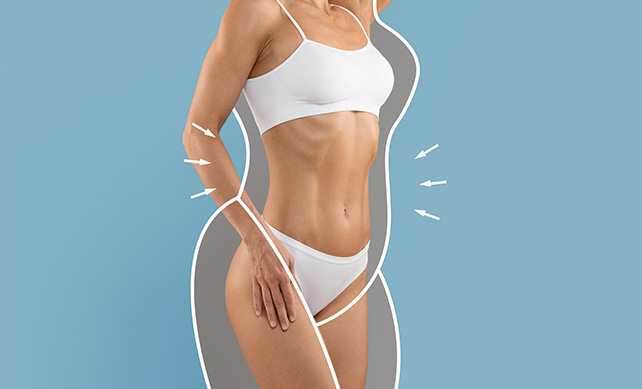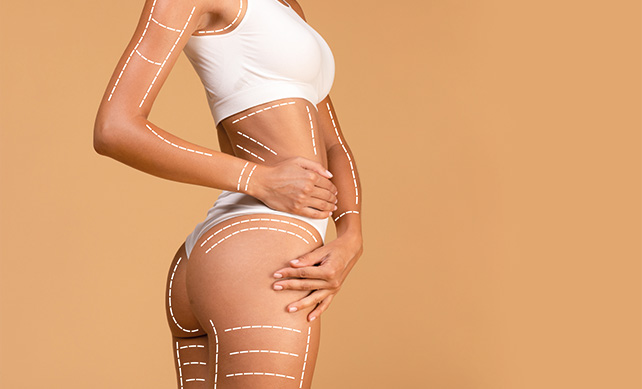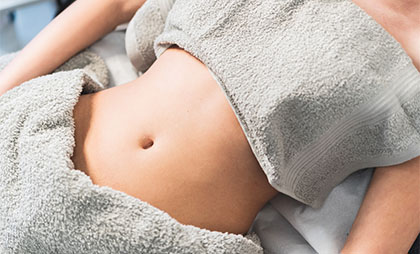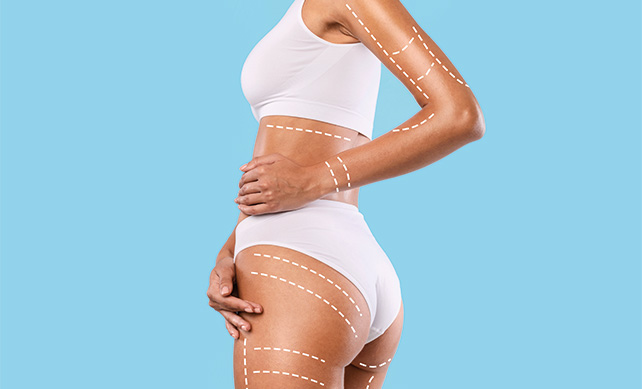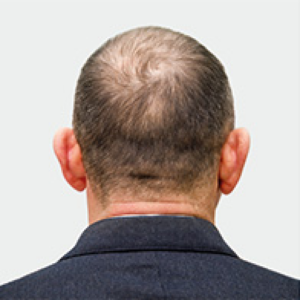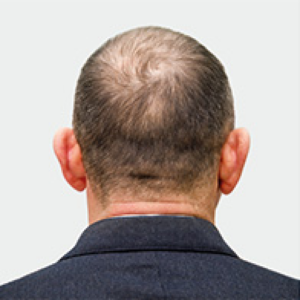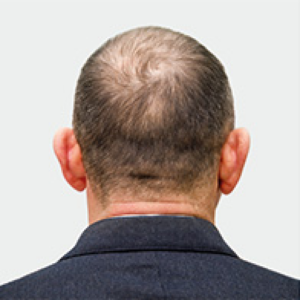Lipolysis
EVERYTHING YOU NEED TO KNOW ABOUT LIPOLYSIS
Lipolysis is a metabolic process in which lipids, or fats, are broken down into constituent components, primarily glycerol, and fatty acids. This process occurs mainly in adipose (fat) tissue and is essential to the body’s energy metabolism. Hormones and enzymes control lipolysis. When energy is needed, hormones like epinephrine, norepinephrine, and glucagon trigger lipolysis, while insulin stops it. They activate an enzyme (HSL) that breaks down fat into glycerol and fatty acids. These components are then used by organs like the liver, muscles, and heart to create energy.
Lipolysis is crucial in providing energy during fasting, exercising, or calorie restriction periods. In these times, lipolysis ensures that the body can maintain essential functions even when food is low, or energy demand is high.
WHAT IS LIPOLYSIS TREATMENT?
Lipolysis procedure, also known as non-surgical fat reduction or non-invasive body contouring, refers to a group of cosmetic procedures. These procedures are designed to break down and remove fat deposits in the body without the need for surgery. Lipolysis can be an alternative to minimally invasive or invasive procedures such as traditional liposuction procedures.
Lipolysis treatments aim to reduce unwanted fat and improve body contour. Lipolysis treatment mainly operates in areas that resist diet and exercise. Various techniques are used for lipolysis treatment, including:
- Laser lipolysis: It is a method where the targeted area is treated with a laser. Laser lipo uses low-level laser energy to target and break down fat cells. The damaged fat cells then release their contents, which are naturally eliminated from the body over time.
Radiofrequency lipolysis: When radiofrequency (RF) energy is applied to the treatment area, it generates heat. This controlled heat damages fat cells and causes them to break down.
Cryolipolysis: Also known as fat freezing or CoolSculpting, cryolipolysis uses controlled cooling to selectively freeze and destroy fat cells. The destroyed fat cells are then gradually removed from the body through the natural metabolic process. One of the best examples of cryolipolysis is the Clatuu Alpha device.
Injection lipolysis: This technique involves injecting a chemical solution (commonly containing deoxycholic acid) into the treatment site to dissolve fat cells.
Ultrasound lipolysis: High-intensity focused ultrasound (HIFU) energy is used to destroy fat cells selectively. The ultrasound energy penetrates the skin and targets fat cells, causing them to break down.
It is important to note that lipolysis treatments are not weight loss solutions but rather body contouring procedures. They are most suitable for individuals who are close to their ideal weight but struggle with stubborn fat deposits resistant to diet and exercise. The results of lipolysis treatments can vary, and multiple sessions may be required to achieve the desired outcome. It is essential to consult the goals, outcomes, and side effects of the treatment with your doctor.
CANDIDATES FOR LIPOLYSIS TREATMENT
Lipolysis treatments are generally suitable for individuals looking to address stubborn fat deposits that have not responded to diet and exercise. Ideal candidates for these non-invasive body contouring procedures typically meet the following criteria:
- Near their ideal body weight: Lipolysis treatments are not intended for a significant amount of weight loss. They are instead for reducing localized fat and improving body contour. Candidates should be at or near their ideal body weight, with a body mass index (BMI) of 30 or less.
- Have localized fat deposits: Candidates should have specific areas with stubborn fat that they wish to target. Lipolysis can be used on areas of the body such as the abdomen, flanks, thighs, arms, or under the chin. Lipolysis treatments are not suitable for overall fat reduction.
Good overall health: Candidates should be in good general health and free of any medical conditions. Some medical conditions may increase the risk of complications or affect the healing process.
Realistic expectations: Ideal candidates understand that lipolysis treatments are not a substitute for a healthy lifestyle. Candidates should maintain a balanced diet and regular exercise routine to preserve the results. The patients should have realistic expectations about the outcome. Acknowledge that multiple treatment sessions may be required and that results will likely be gradual and subtle rather than dramatic.
It is essential to consult with a qualified healthcare professional to determine if lipolysis treatments are appropriate for your specific needs and circumstances. They will evaluate your medical history, overall health, and treatment goals to help you decide on the most suitable option.
FAQ
When does lipolysis occur?
Lipolysis occurs when the body needs energy and breaks down stored fat into fatty acids and glycerol for use as fuel. It can occur during exercise, fasting, and periods of low-calorie intake.
What is lipolysis and where does it take place?
Lipolysis is the process of breaking down stored fat into usable energy. It takes place in adipose tissue, which is where fat is stored in the body.
Do lipolysis injections work?
Lipolysis injections, which are injections of compounds that are supposed to break down fat cells, are not considered an effective or safe treatment for weight loss. There is limited scientific evidence to support their effectiveness, and they can cause adverse effects such as skin necrosis and scarring.
Does laser lipolysis really work?
Laser lipolysis, also known as laser-assisted liposuction, can be an effective treatment for removing small areas of stubborn fat. However, it is not a weight loss solution and is not effective for larger areas of fat. Results can vary and may require multiple treatments.
Does lipolysis cause weight loss?
Lipolysis itself does not directly cause weight loss. It is a process by which fat is broken down into usable energy, but weight loss occurs when the body burns more calories than it consumes.
How much does lipolysis cost?
The cost of lipolysis can vary widely depending on the type of treatment and the area of the body being treated. Laser lipolysis treatments can cost several thousand dollars, while lipolysis injections are generally less expensive.
Is laser lipolysis permanent?
Laser lipolysis can permanently remove fat cells in the treated area, but it is still possible to gain weight in other areas of the body. Maintaining a healthy diet and exercise routine is important for long-term weight management.
Is lipolysis safe?
Lipolysis can be a safe process when it occurs naturally in the body during exercise or periods of low-calorie intake. However, lipolysis injections and other cosmetic treatments can have risks and potential complications and should only be performed by qualified and experienced providers.
How long do porcelain crowns last on front teeth?
With proper care and maintenance, porcelain crowns can last for 10-15 years or more on front teeth.
What does laser lipolysis do?
Laser lipolysis uses a laser to heat and melt fat cells, which are then removed through a small incision. It can be used to remove small areas of stubborn fat and can result in smoother and tighter skin in the treated area.




BLOG & NEWS
BLOG
Which Breast Augmentation Implant Is the Best?
see all

NEWS
TURKEYANA REDEFINING THE CONCEPT OF BEAUTY
see all


















